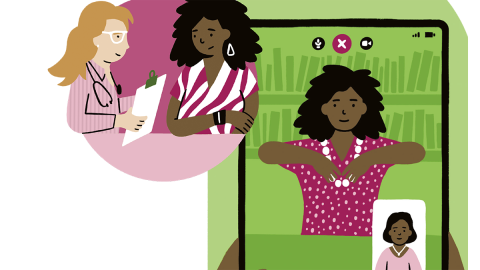Find out what health inequalities are, how they are measured and why they matter.
On this page:

What are health inequalities?
Population health is an approach that aims to improve physical and mental health outcomes, promote wellbeing and improve health across an entire population.
Many factors affect the health of individuals and the communities they live in. When these factors result in unfair and avoidable differences in health outcomes, they are termed health inequalities.
People with higher socioeconomic position in society have a greater array of life chances and more opportunities to lead a flourishing life. They also have better health. The two are linked: the more favoured people are, socially and economically, the better their health. This link between social conditions and health is not a footnote to the ‘real’ concerns with health – healthcare and unhealthy behaviours – it should become the main focus.
Michael Marmot, Fair Society, Healthy Lives, 2010
Measuring health inequalities
Health inequalities have been measured using a huge array of health outcomes.
- Differences in income, occupational grade, educational attainment
- Self-reported health
- Morbidity lifestyle behaviours (risk factors, such as smoking and diet)
- Mortality/life expectancy
- Healthy life expectancy (how healthy you are likely to remain during your lifetime)
Life expectancy
One of the clearest examples of health inequalities is shown in life expectancy and healthy life expectancy statistics. For example, across the UK, the gap between the most deprived and least deprived communities in healthy life expectancy ranges from 14.5 to 23 years. For more, see our report, Easing the pain.
In addition, according to Office for National Statistics (ONS) figures, healthy life expectancy at birth is highest in England and lowest in Scotland.
The wider determinants of health
Health is not simply about the absence of disease. Health and ill health are the result of multiple influences throughout a person’s life.
The World Health Organisation defines a series of prerequisites for health including food, water, shelter and freedom from war. Without these, we can’t even begin to consider what health really means. Many other factors that impact on health. These are called the wider determinants of health and include:
- The physical environment
- The social environment
- The economic environment
- Health-related behaviours
- Genetics
- Ethnicity
Why do health inequalities matter?
Health inequalities are everyone's business. Failing to address health inequalities results in avoidable, unfair differences in people's ability to lead healthy lives across the UK. This could impact on you as an individual, your community, team or service, or the wider healthcare and social care system. There might be issues with access to services due to location, appointment time, accessibility, literacy (whether written or digital) or cultural differences. We should all take an active interest in trying to improve our services to ensure the best outcomes for our population.
As the Health and Care Professions Council (HCPC) standards about promoting public health and preventing ill health state, HCPC registrants must:
- 15.1: understand the role of their profession in health promotion, health education and preventing ill-health
- 15.2: understand how social, economic and environmental factors (wider determinants of health) can influence a person’s health and wellbeing
National strategies to drive change in health inequalities
- The 2021 (allied health professions) health inequalities framework, My role in tackling health inequalities, is collaboratively produced by the King's Fund, Public Health England, NHS England and NHS improvement. It aims to ensure clinicians can and do have an impact on health inequalities.
- The UK Allied Health Professions Public Health Strategic Framework 2019-24 was produced collaboratively to support allied health professionals (AHPs), professional bodies and co-producers in healthcare to share best practice and embed preventative healthcare into practice.
- The Allied Health Professions Strategy for England: 2022-27 followed to support delivering the framework objectives for England.
Why health inequalities matter to communities
As Julian Tudor Hart stated:
The availability of good medical care tends to vary inversely with the need for it in the population served.
In other words, the people who most need healthcare are least likely to receive it. While this inverse care law was first described in 1971, it sadly still applies today.
The CSP’s Easing the pain report examines health inequities in rehabilitation and recovery services across the UK. It shows that the most marginalised groups and communities are more likely to suffer ill-health and miss out on vital treatment, advice and support.
People in the poorest communities have a 60 per cent higher chance of a developing a long-term condition than those in the richest. We also know that people with long-term conditions are often unable to access rehabilitation services and are less likely to stay in or return to work.
We must take all of this into account when planning services. We must be able to fully consider the communities and populations we serve to understand:
- Access issues – cost of travel, language barriers, health literacy, venues and so on
- Health-related behaviours in the local population – statistics such as smoking, substance abuse, activity levels
- Cultural norms – attitudes in the population to physical activity, caring responsibilities, important daily rituals and so on
- Income, housing, education, work opportunities and access to healthy food
By thinking about the needs the population, we can begin to tackle health inequalities, ensure our services are fit for purpose and improve outcomes.




































